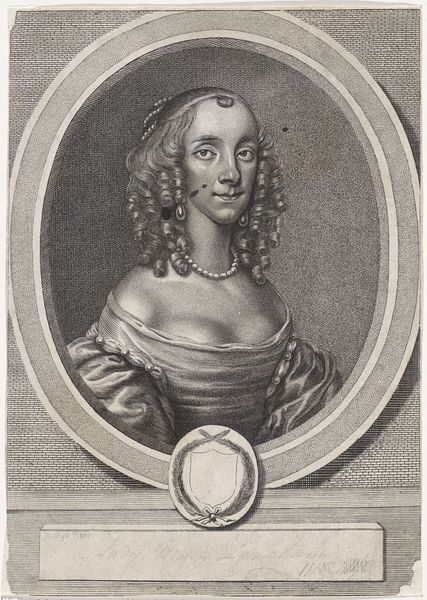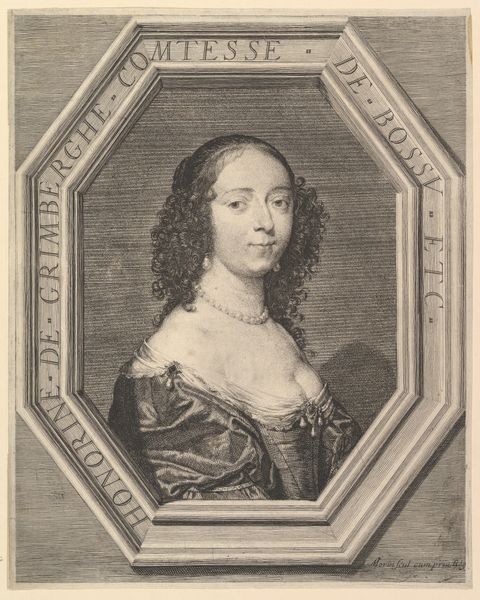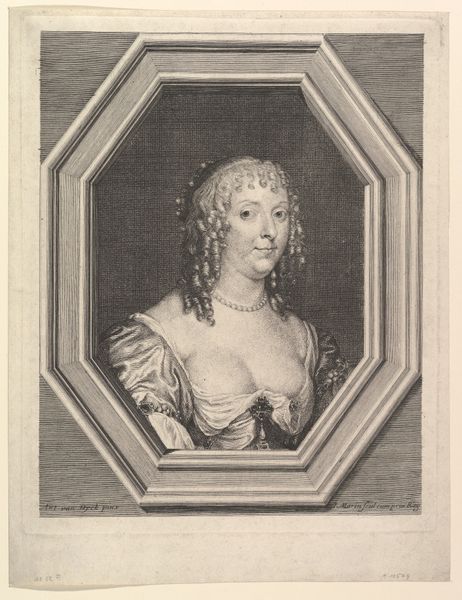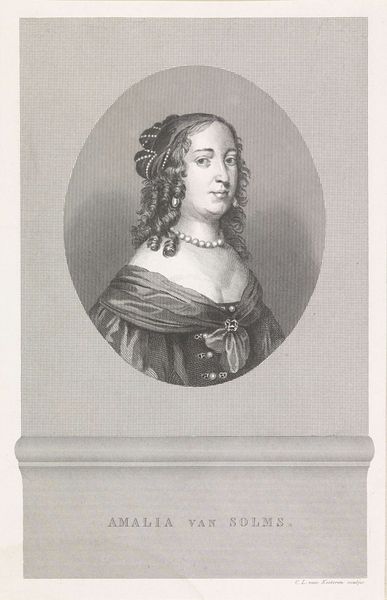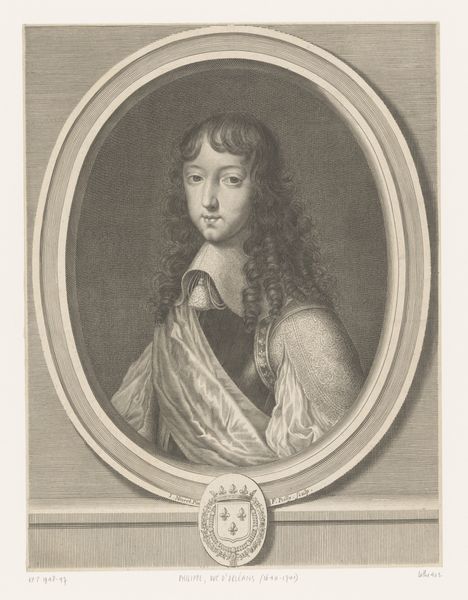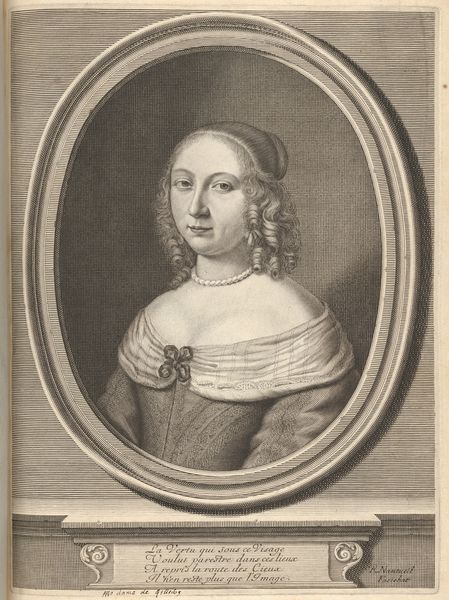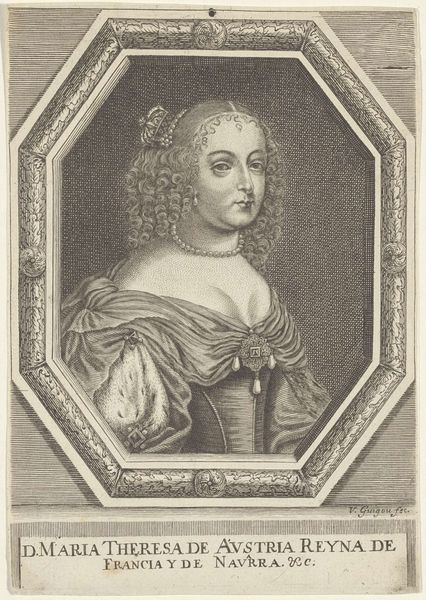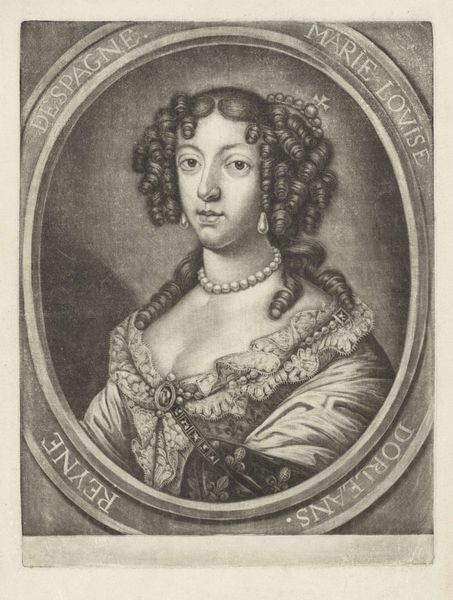
drawing, print, charcoal, engraving
#
portrait
#
drawing
#
baroque
# print
#
charcoal drawing
#
line
#
charcoal
#
engraving
Dimensions: Sheet (trimmed to oval): 8 1/4 in. × 7 in. (21 × 17.8 cm)
Copyright: Public Domain
Editor: We're looking at a portrait of Mary, Princess of Orange, by William Faithorne the Elder, likely created between 1641 and 1660. It appears to be an engraving, so a print. There's something quite delicate and formal about it. What historical context should we keep in mind when viewing this work? Curator: Consider the political climate. Mary was the daughter of Charles I of England. This image, a print no less, would have circulated widely to solidify her image and, by extension, the image of the monarchy, especially during the tumultuous years of the English Civil War and the Interregnum. Do you think it presents a neutral or favorable view? Editor: Definitely favorable! She's adorned with pearls and beautiful fabric; everything about this screams nobility and privilege. Was this intended as propaganda, then? Curator: Propaganda is perhaps too strong, but it certainly aimed to project power and legitimacy. Prints democratized art to a degree; they made imagery accessible beyond the elite. But consider who commissioned the print, who controlled its distribution. The sitter, the exiled Queen Henrietta Maria was very skilled in using portraits and commissioning engravings of them as visual tools to reinforce the image of her family in England and Europe, creating visual networks of kinship and alliances. It’s a careful piece of image-making aimed at shoring up a weakened monarchy through visual media. Do you notice how the artist employs very small lines? Editor: Yes, it is meticulous. Now that you mention the socio-political context, it all makes much more sense. It highlights the calculated nature of portraying someone like Mary during this specific historical context. Curator: Exactly. Images weren't just representations, they were active players in the shaping of public opinion. I’ve also learned a lot from exploring this picture.
Comments
No comments
Be the first to comment and join the conversation on the ultimate creative platform.
